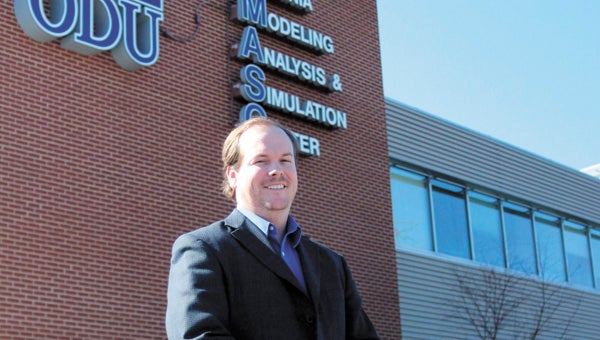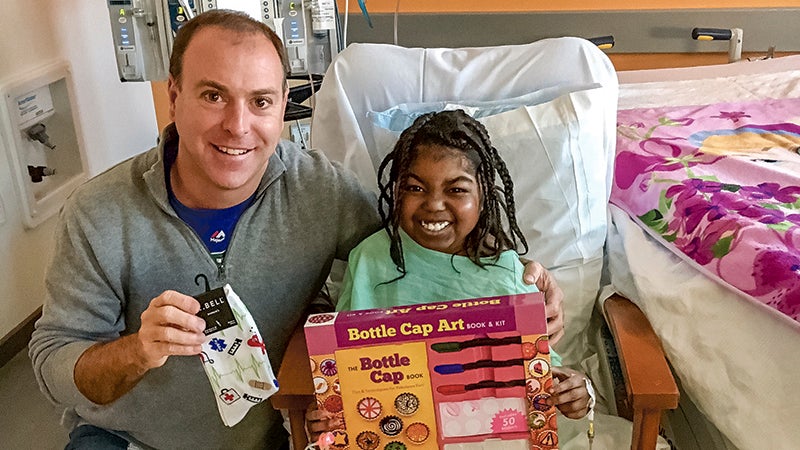No dinner plans? There’s (almost) an app for that
Published 10:29 pm Monday, March 4, 2013

Doug Pillsbury’s company DJP Limited, which in 2012 launched DeerLogic, a mobile app for deer hunters, now operates out of the Virginia Modeling, Analysis and Simulation Center in North Suffolk. Pillsbury has described a raft of new DJP projects in the pipeline, including an app delivering last-minute restaurant deals in real time.
Suffolk software developer Doug Pillsbury and his wife are no strangers to the “what’s for dinner” conundrum.
Like busy couples everywhere, the end of the day often finds them sans plans for a home-cooked meal and perusing options for a budget-wise dining experience beyond the nest.
“My wife and I can’t tell you how many times we come home from work and neither of us have taken out something to thaw,” Pillsbury said.
After successfully launching a mobile app for deer hunters in 2012, Mealteca, a “time-sensitive advertisement” app for restaurants, is one of several new projects under development by Pillsbury’s DJP Limited, after it relocated from Chesapeake to ODU’s Virginia Modeling, Analysis and Simulation Center in North Suffolk.
For a monthly fee, Mealteca, which Pillsbury plans to launch in April, will allow restaurants to advertise special offers in real time to potential customers who have downloaded the app for free.
“Restaurants … can have different deals running at any given time,” Pillsbury said. “It’s almost like a mobile Groupon without the coupon.”
Other, more commercially sensitive, DJP projects, such as one he said the company is partnering on with the Smithsonian Institution, Pillsbury was only able to describe in more general terms.
The Smithsonian project, he said, involves the “visualization” of vector-borne illnesses such as malaria. Another data-analysis project is under way with the Air Force.
ICAMS, though, is a DJP project that is less secret. Recently demonstrated to Suffolk Fire and Rescue, it allows firefighters and their managers to accurately monitor oxygen consumption during fire responses, Pillsbury said. The acronym stands for Incident Command Area Management Systems.
“It gives them the ability to project when they are going to run out of air,” he said. “Firefighters die every year because they run out of air.”
The software system calculates how long firefighters can operate in an oxygen-depleted environment, Pillsbury said.
“Right now, things start beeping when there’s not enough air in a tank, or they look at the air pressure on a gauge,” he said.
It all started with DeerLogic, the Android app the company launched in 2012 that allows hunters to locate, pattern and track game on cellphones using GPS technology.
Downloads of the app are averaging 100 a month, and the company is now working on an adaptation for Hunters for the Hungry, a national organization that donates venison to food banks, Pillsbury said.
The company is also working with an unnamed engineering consultancy on using DeerLogic to track the movement of deer in relation to urban sprawl, he said.
The ODU alumnus said admission into VMASC’s incubator, which was recently approved by the Board of Advisors, has opened new horizons for his company.
Other new DJP projects, he said, dovetail with one of VMASC’s focuses — medical efficiency.
“We have a lot of software technology we are working on that fits right in with what VMASC is doing,” Pillsbury said. “Being here is critical for us at this point in our life.”
Thomas Reese, director of business development at VMASC, said the incubator seeks out research-focused companies in modeling and simulation.
Federal Economic Development Administration funding, through the Hampton Roads Partnership, partly supports the incubator, he said.
“We only have about three companies in there currently,” he said, adding that others have circulated through since the incubator’s 2007 opening.
For companies like DJP, VMASC offers state-the-art facilities as well as expertise and assistance from instructional staff and interns, according to Pillsbury.
“I’m very excited about what he’s (Pillsbury) doing,” Reese said. “We try to provide the kind of environment (where) they can grow much faster.”





